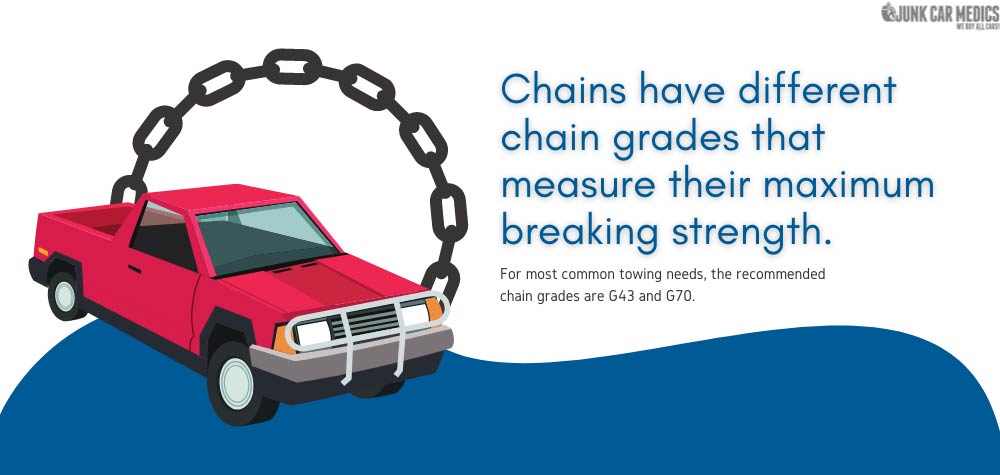If you have a truck that you need to tow by yourself, it can be done if you have a partner ready to help you. In order to remain compliant with most versions of local and state law concerning truck towing, you’ll need to collect a few items before starting:
- A towing-approved heavy-duty truck chain with hooks on both ends.
- A sign that reads “In Tow”, to be placed on the rear of the towed vehicle.
- An insured front vehicle rated for the weight of the towed vehicle.
Once you have these items ready, you are ready to verify your vehicles:
- The towed vehicle needs to have working emergency flashers.
- Both vehicles need working, reliable brakes.
- Whoever is in the driver’s seat of the tower vehicle needs a clear line of sight to the driver of the front vehicle.
At this point, you’re ready to begin towing your truck with chains.
Preparing To Tow Your Truck With Chains: Step-By-Step
First, wrap the chain under the rear axle of the truck that’s doing the towing. Hook the end of the chain over the first link it reaches, keeping the chain tight around the axle. Center the chain so that it does not slip from side to side while attached.
Hook the chain in the same manner under the front axle of the rear vehicle, making sure that both hooks are centered. Make sure that neither one slips when pulled to the right or left.
Drive the front vehicle forward slowly until the chain is taut, then get out and verify the front and back hooks. There should be between six and 10 feet of distance between the two automobiles.
When You Are Ready to Tow
Have the rear driver place the car in neutral and turn on its hazard lights. When both drivers are ready, the rear driver should signal the front driver to begin and carefully ride the vehicle’s brakes to ensure that the chain remains tight. This can be a delicate process when encountering hills, so be sure to move slowly. Most state laws require that towed vehicles stay in the rightmost lane whenever possible.
The front driver should use hand signals to warn the rear driver of imminent turns and stops. The rear driver has limited visibility and needs to rely entirely on the front driver’s hand signals to know when to brake.
If the chain becomes loose or unhooked for any reason, it is the rear driver’s responsibility to honk, indicating that there is a problem to the front driver. Both drivers may then bring their vehicles to a complete stop and verify the chains before moving on.

